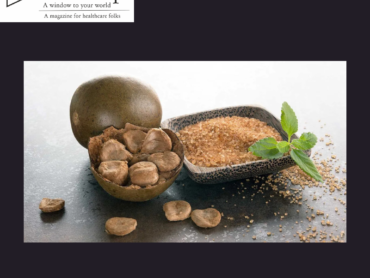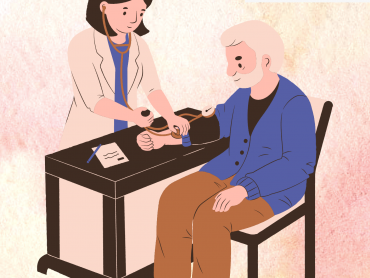Have we heard about the distinction between village engineers, city vendors, village accountants, and city shopkeepers? Health care should be available for all, irrespective of location, but does this enable the healthcare professional to be given a tag based on where they practice?
The health of a human being is, to a large extent, defined by the environment, the community, the approach towards the disease of the people, the acceptance of treatment by patients, the resources available, accessibility of facilities, and the mindset towards promoting well-being. Village doctors and town doctors have clear boundaries; their dissimilarity permeates the minds of many but has not been transformed into a concept.
 Village Doctors
Village Doctors
In India, the majority of physicians practicing in villages come from the AYUSH area. Most practice allopathy, while others still practice a combination of traditional and modern medicine. Rarely do a few abide by the practice to the degree they have pursued. This mode of practice relieves the villagers of the disease; it can be symptomatic relief and many times, also serves as a cure.
Does this way of practice help in diagnosing chronic illnesses? Does this approach take into account all long-term side effects prior to physicians prescribing drugs? Does this result in complete healing?
A student studying allopathy or pursuing MBBS spends 5.5 years in India learning about the detailed pharmacology of the drugs that an AYUSH doctor prescribes with ease after studying a completely different course of medicine. It has chronic effects on the kidneys and liver, which are the heart of our body’s metabolism. There is no methodology for identifying the side effects of negligent use of these drugs on a patient.
Shouldn’t this be a cause for concern for those who take the medication and feel better momentarily?
The patient approach to healing in the village is different on a wide spectrum from that in the city. The majority of city dwellers prefer minimal treatment or prevention, while the majority of the village’s population strongly believes in medical interventions. When I worked in a primary health care facility in a village in Palghar, I met with many patients who asked for injections as part of their treatment. They firmly believed that they would recover faster only if they got the injections. This mindset eventually means that doctors practicing in villages resort more to administering injections, even when it is not absolutely necessary. The placebo effect of injections seems to work much better than just oral medicines in this population. Over time, even when patients do not require it, doctors in villages give injections so patients feel better earlier and maintain placebo.
This has been coined the slang term ‘jugaad’ in many villages. It means an innovative problem-fixing solution. In the absence of high-end technology and equipment, doctors have also made miraculous health developments with these ‘jugaad’ treatments. There is no right or wrong then, what helps is the best!
For instance, ENT surgeon and standup comedian Dr. Jagdish Chaturvedi has several medical innovations to his name, which are low-cost and easy to use in rural areas.
He developed a Noxeno, a device that removes foreign bodies from the noses of children in rural areas, without needing any invasive surgery. It is presently being used across 1,000 hospitals and was even featured in News Asia’s documentary ‘Field Guide to Innovations’ in 2017.

City Doctors
The prevalence of specialists, super specialists, and even MBBS physicians is more in cities because of modernization. Doctors with degrees of super-specialization have invested time and money immensely to achieve this booth in their career. That probably translates into higher costs for patients. City residents would rather go to a cardiologist for chest pain to avoid any hidden future risks than take a simple symptomatic relief from a general practitioner. The increased literacy in the cities of India makes the population dictate highly skilled professionals. This makes doctors settle down in cities and the loop continues and so on and so forth. The patient receives a detailed diagnosis with the same course of treatment for their disease, but it has its cost. Doctors remain true to their profession and practice, but hospital corruption can engulf a person financially in the cities. Unnecessary investigations that exaggerate the hospital’s finances have been repeatedly reported without any intervention. These get looked over by keeping the patient’s future disease prevention in mind. As the saying goes, wherever the money comes in, greed follows.
In the villages, residents remain committed to their family doctors and continue to follow up with them as well as the whole family. This allows the doctor to stay abreast of the patient’s disease progression and family history. Hence maintaining a fulfilling patient-doctor relationship throughout.
Contrary to what happens in villages, in cities, there are many options, and the patient goes to a doctor to obtain a second or third opinion for his treatment. It breaks the doctor-patient relationship, and the patient has no place on their Healing Journey. There are Google-aided patients who without any medical knowledge jump from one treatment course to the other trying to seek the best. Over time, it is them who suffer from the variety of drugs introduced into their body.
There is revolutionary competition for city doctors to keep their patients well and to continue their follow-ups with them.
Commercialization obviously comes into play, with cities being the location for a variety of professions. In villages, most doctors have the time to listen deeply to patients’ complaints and even side talk, while in the city, the doctor must run by the clock due to other prior commitments. The paradox is that village doctors have a lot of time to listen to the detailed complaints of the patient but not enough technology to make an apt diagnosis, while city doctors are highly equipped but cannot provide the patient with as much time for them to feel satisfied.
Compassion and patient attachment can be seen more in village practitioners due to a small covered area and time availability.
The foundation and core of disease treatment remain the same across all types of practice. It is the patient who chooses the right physician to be the path of healing. There is no scale to weigh out the differences accurately. What happens in the villages and cities regarding healthcare stays the same.
The question arises: Are there any ways in which we could bridge this gap between village doctors and city doctors? Is there a need to do so?
Image sources:
https://create.vista.com/photos/doctor/
https://www.dreamstime.com/illustration/doctor-village.html









